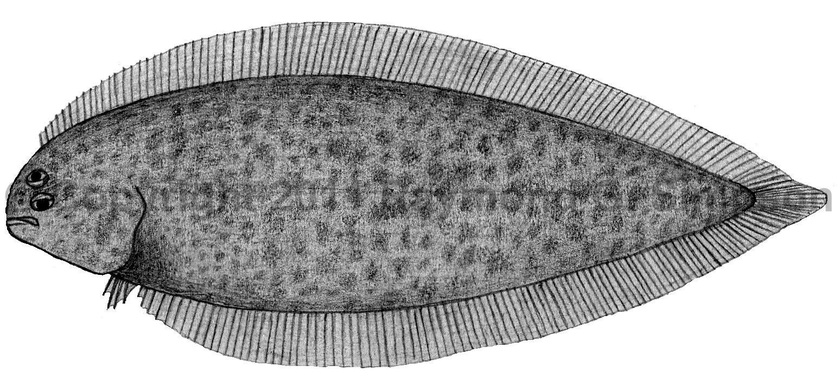
Common Name
Freckled Tonguefish
Year Described
Goode and Bean, 1883
Identification
Dorsal Fin Rays: 105-113
Anal Fin Rays: 91-98
Pectoral Fin Rays: none
Pelvic Fin Rays: 4
Caudal Fin Rays: 14, sometimes 13 or 16
Longitudinal Scale Rows: 120-135
Vertebrae: 57-60
Pterygiophore pattern (1st three interneural spaces): 1-2-2
Other diagnostic characters include: pupillary operculum absent, teeth well developed on al jaws, ocular side lower jaw without fleshy ridge, scales absent from blind side dorsal and anal fins, and 5 hypurals.
Color
Varying shades of brown with faint mottling or marbling. Peritoneum black. Dorsal and anal fins light brown with no obvious spotting or mottling. Caudal fin lightly pigmented basally. Blind side off-white with black spots under skin along vertebral column.
Size
Adults mature at 60-65mm. Maximum size to 87mm.
Habitat
Outer continental shelf and upper slope from 239-810 (usually 400-600m), over mud bottoms.
Range Map

Range
Offshore from New York to SE Florida
References
Munroe, T.A. 1998. Systematics and ecology of western Atlantic tonguefishes (Symphurus: Cynoglossidae: Pleuronectiformes). Fish. Bull. 96(1):1-182.
Munroe, T. A. 2003. Bothidae (Pp. 1885-1895), Scophthalmidae (Pp. 1896-1897), Paralichthyidae (Pp. 1898-1921), Poecilopsettidae (Pp. 1922-1923), Achiridae (Pp. 1925-1933), Cynoglossidae (Pp. 1934-1959). In: Carpenter. 2003. The living marine resources of the Western Central Atlantic v. 3.